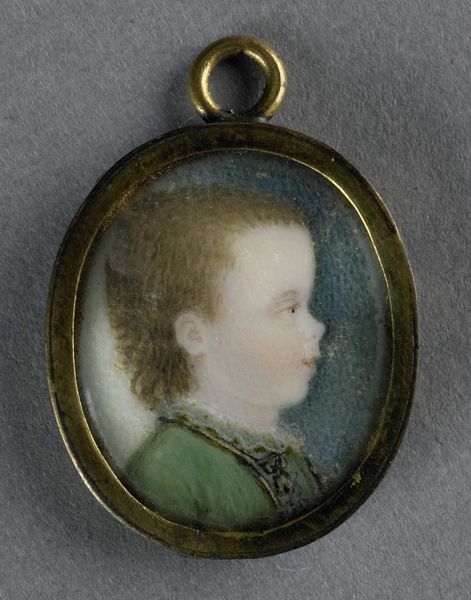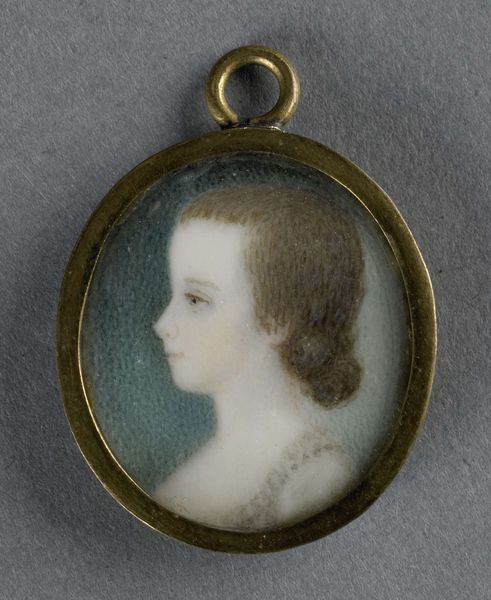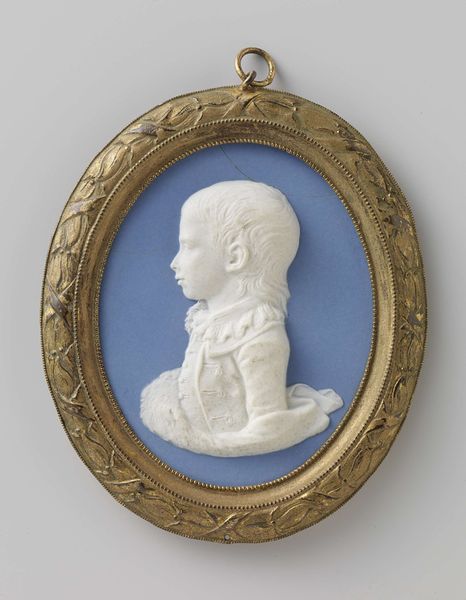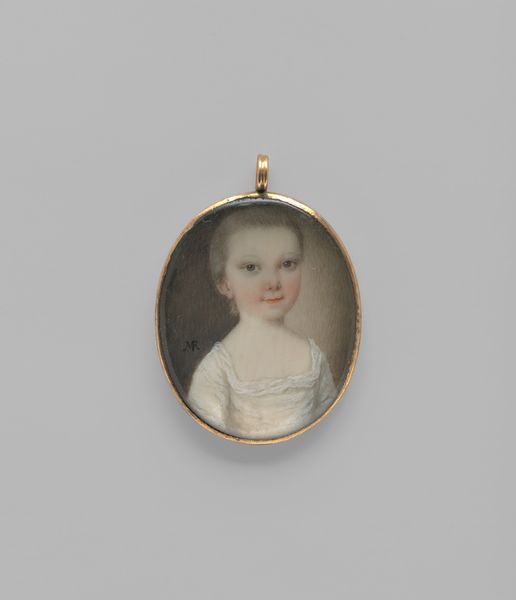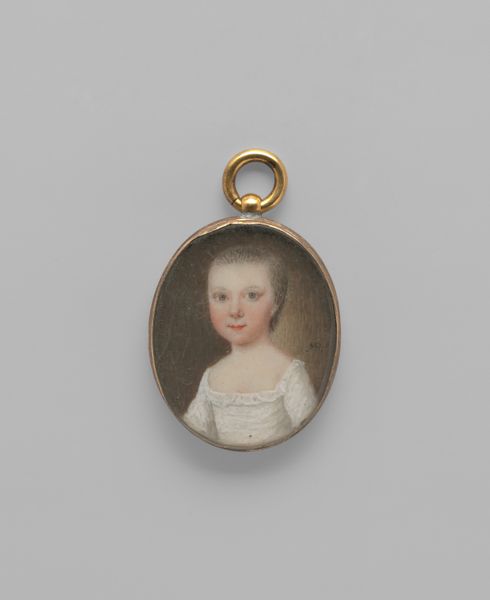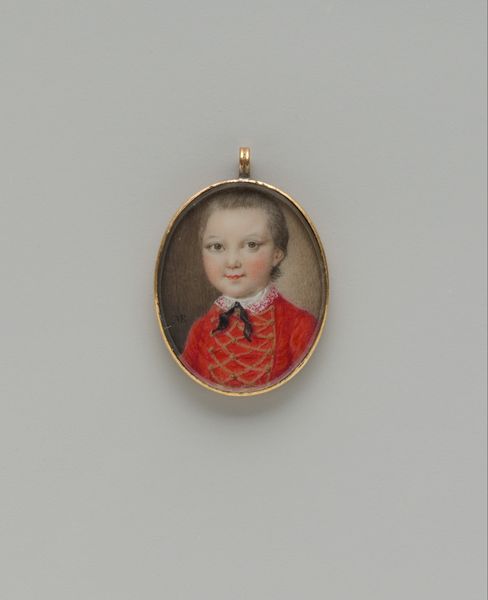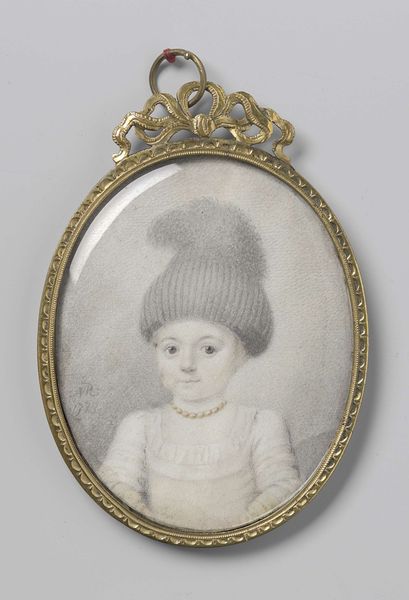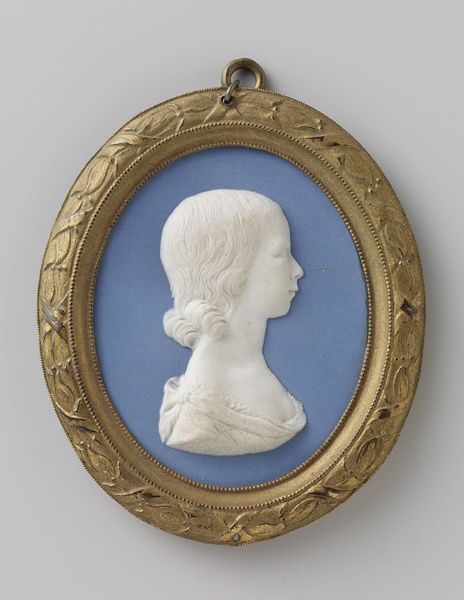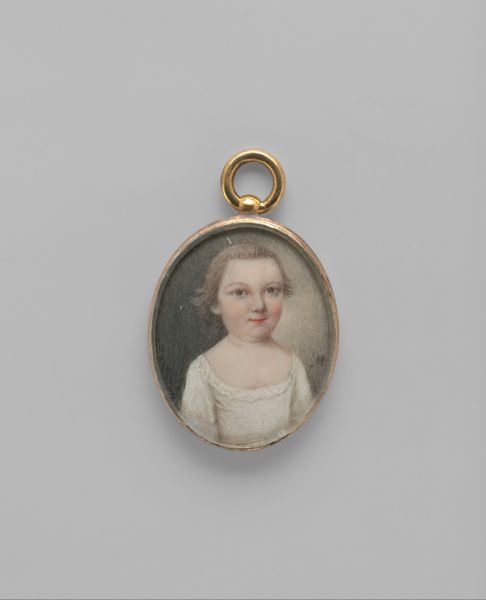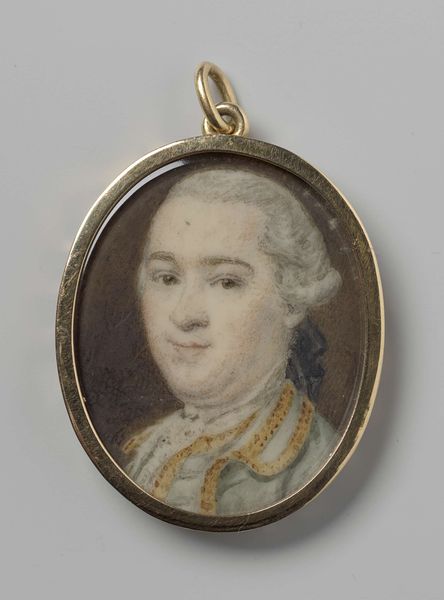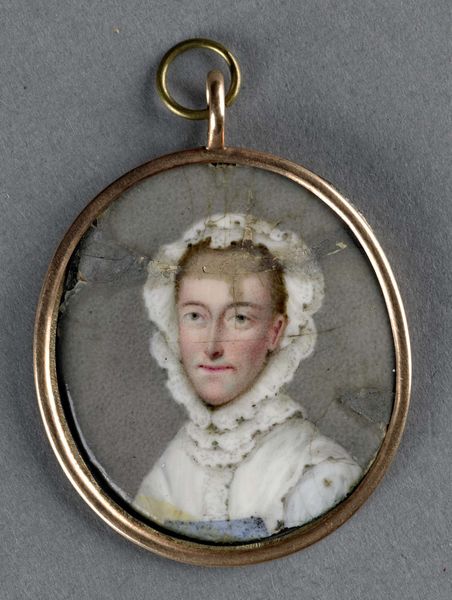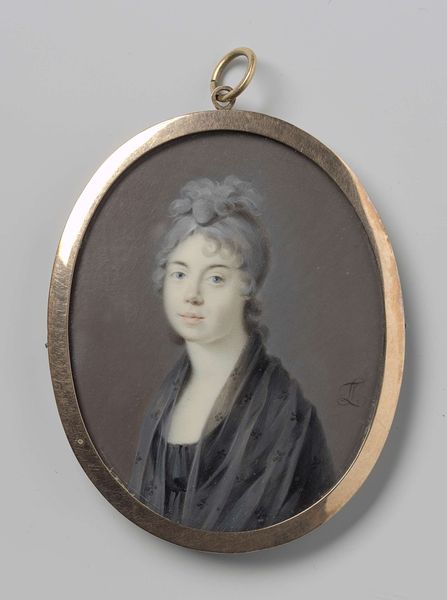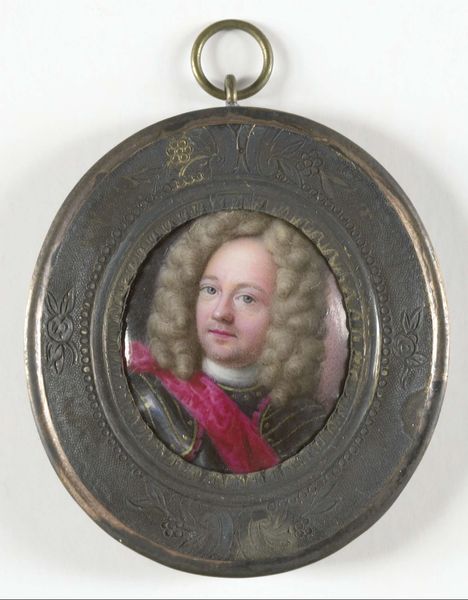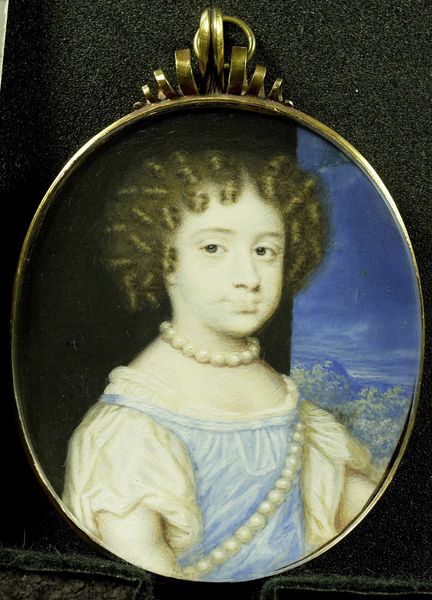
Willem Frederik (1772-1843). Prins van Oranje-Nassau. De latere koning Willem I, oudste zoon van Willem V en Wilhelmina van Pruisen, als kind 1774 - 1780
0:00
0:00
Dimensions: height 2.8 cm, width 2 cm, depth 0.4 cm
Copyright: Rijks Museum: Open Domain
Pieter le Sage painted this miniature portrait of Willem Frederik, the future King William I of the Netherlands, using watercolor on ivory. The choice of ivory as a support is significant, as it was a prized material for miniatures due to its smooth surface and slight translucence, allowing for delicate, luminous effects. Le Sage’s technique involves layering thin washes of color to build up form, capturing fine details like the lace collar and the soft texture of the child’s hair. The portrait is encased in a gold frame, further emphasizing its preciousness and status as a luxury object, available only to a wealthy clientele. The making of such a miniature involved specialized skills in both painting and working with precious materials. It speaks to the patronage systems of the time, in which artists were commissioned to create objects of personal and political significance. By considering the materials, making, and context of this miniature, we gain a deeper understanding of its cultural value, challenging traditional distinctions between fine art and craft.
Comments
No comments
Be the first to comment and join the conversation on the ultimate creative platform.
